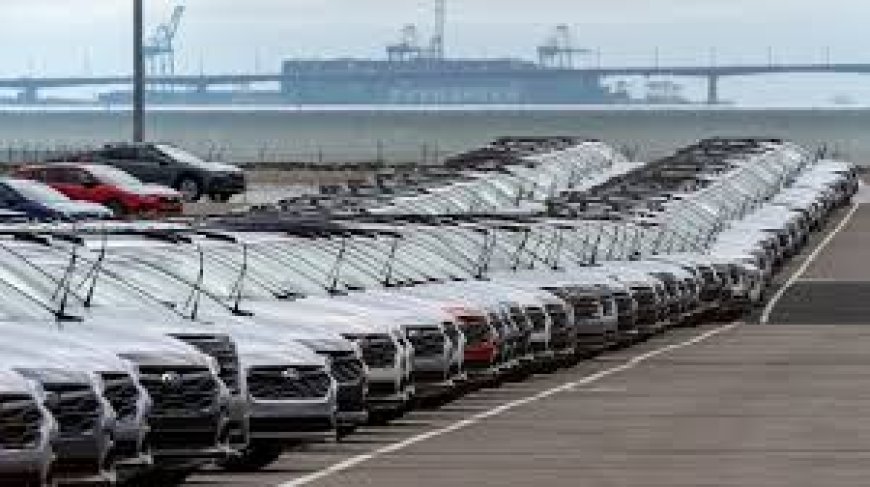Auto OEMs to witness pressure in Q1 FY26E amid input cost surge and operational headwinds
Indian auto OEMs are expected to witness a challenging Q1 FY26 due to higher input costs, softening demand, and ongoing EV investments. Analysts forecast margin compression across most segments.

Mumbai, July 12, 2025 — India’s automobile original equipment manufacturers (OEMs) are expected to face significant margin and profitability challenges in the first quarter of FY26, as rising input costs and ongoing operational inefficiencies weigh on their performance. According to market analysts, the quarter is likely to be subdued, particularly for two-wheeler and passenger vehicle manufacturers, due to softening demand, higher raw material prices, and increased spending on electric vehicle (EV) transitions.
Rising Input Costs: A Key Pressure Point
A significant factor denting the performance of OEMs in Q1 FY26E has been the sharp uptick in input costs, especially steel, aluminum, and rubber — all critical components in vehicle manufacturing. Commodity prices have remained elevated due to global supply chain disruptions and geopolitical tensions in Europe and the Middle East.
"Auto manufacturers are battling with increased commodity prices, particularly for steel and aluminum, which together account for over 30% of total raw material costs in vehicles," said Rahul Mishra, Senior Analyst at JM Financial. “This is likely to result in gross margin compression, especially in the two-wheeler and commercial vehicle segments, where price hikes to pass on costs have been limited."
Demand Normalization and Inventory Overhang
While FY25 saw a strong post-pandemic rebound in auto sales, FY26 has started on a relatively slower note. OEMs have seen a normalization in pent-up demand, especially in rural and semi-urban markets, which had previously driven volumes.
“The consumer sentiment has been moderately weak in Q1 due to higher fuel prices, heatwaves in North India affecting rural sales, and a delay in monsoons,” said Arpita Kulkarni, Auto Sector Lead at Motilal Oswal. “Additionally, the inventory build-up ahead of festive season demand projections hasn’t matched actual offtake, further pressurizing dealers and OEMs alike.”
EV Transition Costs Mounting
The industry’s aggressive shift toward electric vehicles is also proving to be a double-edged sword. While the long-term outlook for EVs remains positive, in the near term, the upfront investments in EV R&D, battery technology partnerships, and dealership infrastructure are straining cash flows.
Tata Motors, Mahindra & Mahindra, and Maruti Suzuki are all investing heavily to strengthen their EV portfolios. However, returns on these investments are still 2–3 years away, say analysts.
“The EV push is necessary for survival and future growth, but right now, it’s putting pressure on margins. OEMs are diverting capital from ICE vehicles and facing underutilization at existing plants,” said an Edelweiss Securities report.
Mixed Segment Performance
Not all segments are impacted equally. The commercial vehicle (CV) segment, particularly medium and heavy commercial vehicles (MHCVs), showed relatively resilient demand backed by government infrastructure spending and a revival in mining and logistics. However, the light commercial vehicle (LCV) segment witnessed stagnation.
Passenger vehicle (PV) sales saw mixed results, with premium SUV sales holding up due to urban demand, while small car volumes continued to decline.
Two-wheelers, which were once considered the bellwether of rural consumption, showed weak volume growth. Companies like Hero MotoCorp and Bajaj Auto are expected to post flat to low-single-digit growth for Q1 FY26.
Operating Metrics Under Pressure
Operating profit margins (OPM) are likely to be under pressure across the board. According to ICICI Securities, the auto OEM universe could see a 150–200 basis points contraction in EBITDA margins on a YoY basis. The cost inflation has been partially offset by selective price hikes, cost rationalization, and improving product mix, but these measures may not be sufficient.
“While companies have undertaken minor price hikes in Q1, the impact of increased input costs and weak operating leverage will reflect more prominently in their financials,” noted the firm.
Analyst Forecasts and Market Sentiment
Brokerages remain cautiously optimistic for the rest of FY26, especially the second half, which could benefit from festive demand, improved rural sentiment post-monsoon, and a clearer policy direction from the new government. However, most are trimming their earnings estimates for Q1.
“Q1 FY26 is likely to be a reset quarter. Most OEMs will bear the brunt of cost and demand pressures, but from Q2 onwards, we expect some normalization as commodity prices stabilize and volumes improve,” said Vaibhav Shah, Auto Analyst at Axis Securities.
Stock market sentiment has been mixed. Auto stocks such as Maruti Suzuki, Tata Motors, and Hero MotoCorp have shown range-bound movements in the last two months. Analysts recommend a ‘hold’ strategy for now, with selective buying in CV-focused companies like Ashok Leyland and Tata Motors.
Investor Outlook
For investors, the current scenario demands caution. The long-term fundamentals of the Indian auto industry remain intact, supported by rising per capita income, low vehicle penetration, and strong EV policy support. However, in the near term, volatility in earnings and cost structures could lead to underperformance in the sector.
Experts advise looking beyond Q1 for valuation resets and potential buying opportunities. “Investors should wait for clearer visibility on rural demand recovery and input cost stabilization. The upcoming festive season and EV adoption ramp-up could be key triggers,” added Mishra of JM Financial.
The first quarter of FY26 presents a challenging landscape for India’s auto OEMs. Input cost escalation, demand moderation, and EV capex pressures are converging to dent margins and growth momentum. While structural tailwinds remain, Q1 will likely test the resilience of automakers before a possible rebound in the latter half of the fiscal.
What's Your Reaction?
 Like
0
Like
0
 Dislike
0
Dislike
0
 Love
0
Love
0
 Funny
0
Funny
0
 Angry
0
Angry
0
 Sad
0
Sad
0
 Wow
0
Wow
0












































































